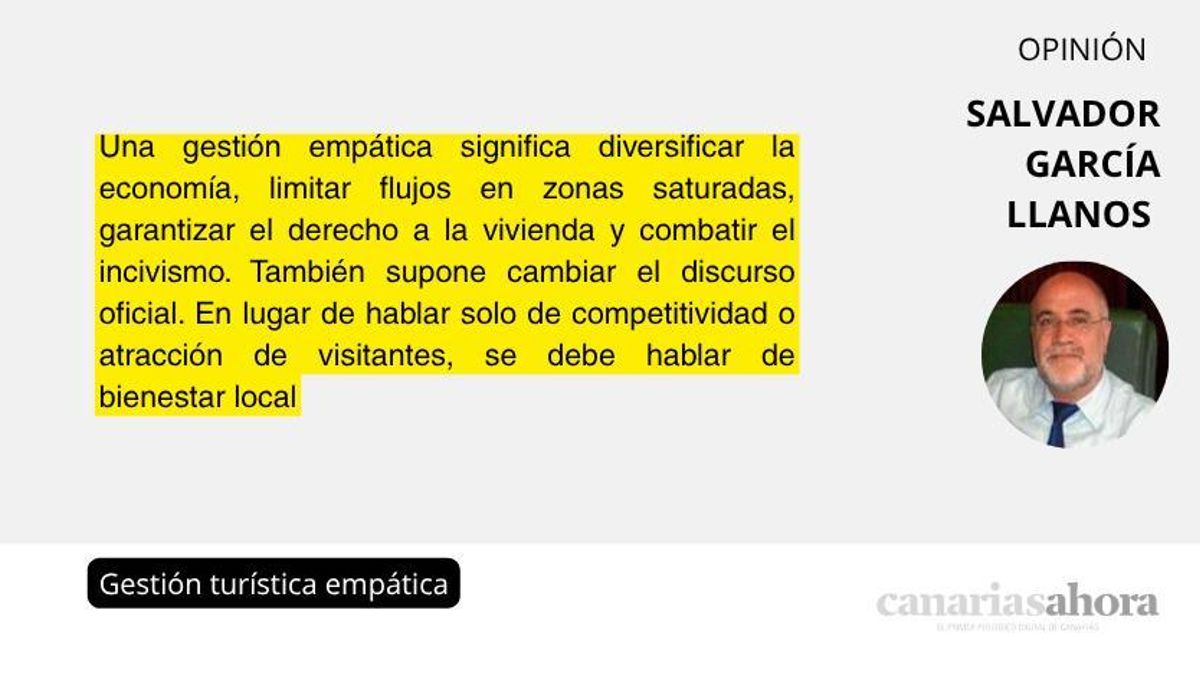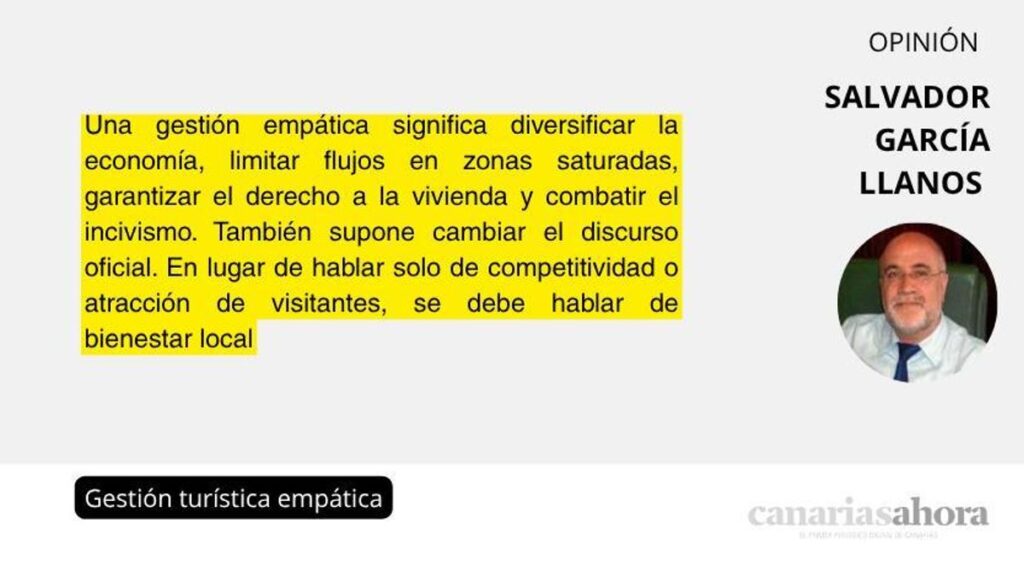Rethinking Tourism: From Phobia to Empathy
In her doctoral thesis, Ana Soliguer Guix, a researcher at Twintur and the Open University of Catalonia, advocates for an empathetic approach to tourism management. She argues that true sustainability means diversifying the local economy, limiting visitor numbers in saturated areas, guaranteeing the right to housing, and tackling anti-social behaviour. It also requires a fundamental shift in the official narrative, moving beyond discussions of mere competitiveness and visitor attraction to openly prioritizing social well-being.
More Than Just Streets: The Emotional Impact of Tourism
It’s well-documented that tourism doesn’t just transform the physical streets of a destination; it profoundly affects how residents feel about their own city. In several Canary Island towns, which are now major tourist hotspots, complex social processes of construction and transformation are underway. Viewing tourism through the lens of social psychology allows us to see it as a human relationship—complete with tensions and boundaries—rather than just an industry.
Decoding the “Tourists Go Home” Graffiti
“Talking about emotions might seem untechnical, but it is essential for creating sustainable tourism models and livable cities,” writes Soliguer. She uses graffiti like the ubiquitous “Tourists go home”—a potent symbol of protests against tourist apartments—as a starting point for her analysis. According to her research, these messages do not express hatred towards visitors. “They reflect the exhaustion of people who feel that their city no longer belongs to them,” she clarifies.
The Real Meaning Behind “Tourism Phobia”
In her doctoral research on residents and tourism, Soliguer sought to understand this underlying discontent. By analysing media coverage, neighbourhood protests, and the daily emotions of locals, she made a critical discovery: so-called “tourism phobia” is not a hatred of tourists. Instead, it is an emotional reaction to a tourism model that has exceeded the limits of peaceful coexistence.
A Media-Born Label
Although the term “tourism phobia” was popularised in the Spanish media around 2016, it did not originate in the neighbourhoods. By examining media treatment of tourism in Barcelona, for instance, Soliguer found that the concept was born in newsrooms themselves! The media used it to simplify a complex phenomenon, framing any local criticism of tourism as “hatred of tourists.” This label diverted attention, effectively discrediting the protests and painting critical residents as enemies of progress.
The Core of the Complaints
The residents’ grievances, however, were not aimed at individual tourists but at the tourism model itself. They highlighted the intense pressure on the housing market, the saturation of public spaces, and the gradual loss of neighbourhood identity. In later work, Soliguer showed how this media narrative reinforces stereotypes and hinders empathy. When a conflict is labelled as a “phobia,” the possibility for constructive dialogue is lost.
From “No to Tourism” to “Yes to Our City”
This line of reasoning leads Soliguer to a powerful conclusion: the sentiment is shifting from a simple “no to tourism” to a resounding “yes to the city.” The statement, “We want to be able to live here,” represents a convergent opinion among many citizens. This is not just a passing thought but a profound political and emotional demand. Residents, regardless of their background, have become agents of change, with prominent promoters, professionals, business owners, freelancers, and unionists emerging from their ranks.
The Path Forward: Empathetic Tourism Management
This is precisely why, during conflicts or protests, many people prefer to avoid the slogan “no to tourism” and instead use “yes to coexistence.” Dr. Soliguer calls this approach “empathetic tourism management.” Such management involves diversifying the economy, limiting tourist flows in saturated zones, guaranteeing the right to housing, and combating incivility. It also means changing the official discourse from one focused solely on competitiveness to one that prioritizes local well-being.
A City That Needs to Breathe
In reality, “tourism phobia” is a symptom of a city that needs to breathe. A more humane management style—one that sets clear limits, encourages community participation, and acknowledges emotional impacts—can restore that lost vitality. A sustainable city requires not just economic and environmental balance, but emotional habitability. Ultimately, the solution is not necessarily to reduce tourist numbers, but to significantly increase institutional empathy. Listening to residents and recognizing their discomfort as legitimate must be a cornerstone of any forward-thinking tourism policy.


